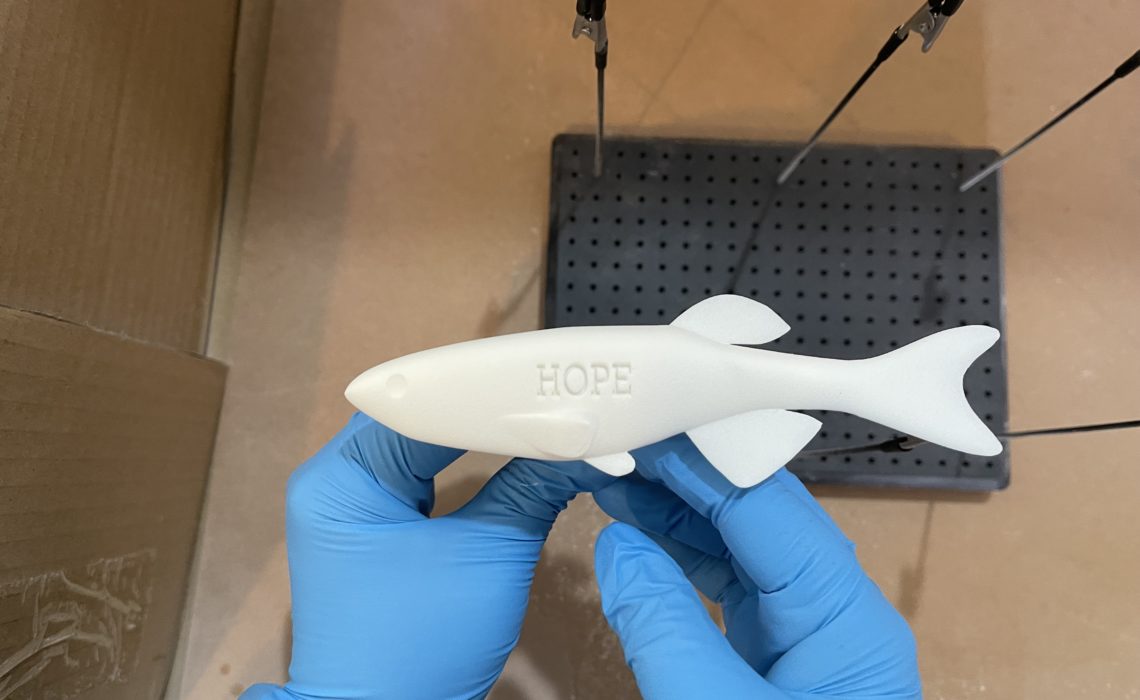
The 3D printed zebrafish display adorning the lobby of the Dana-Farber Cancer Institute is a statement piece on many levels, reflecting gratitude to the many hundreds of patrons who donated funds for cancer research at their facility, as well as highlighting the wonders of the zebrafish, and the innovative materials and technology used to create such a large-scale work.
Initiated as Dana-Farber began working on a campaign to bring together larger numbers of donors, the overall idea was to bring everyone forward to help further cancer research. That concept was then taken a step further, inspiring the idea for the installation, with the zebrafish acting as an intuitive fit.
Although it may just look like a tiny minnow, the zebrafish has earned a gigantic reputation in biomedical research due to its genetic makeup, which is similar to that of humans by 70 percent. Because of that, continued biomedical research has come to rely on the zebrafish for advances in areas like cancer, cardiology, and even assisting in studies to treat blindness and deafness.
The zebrafish is also capable of regenerating body parts within weeks, whether damage occurs to their hearts, tails, or their eyes. Their blood systems and even organs like their kidneys are similar to humans. In terms of cancer research, they offer incredible access to studying tumors and acting as ‘model organisms’ in the lab.
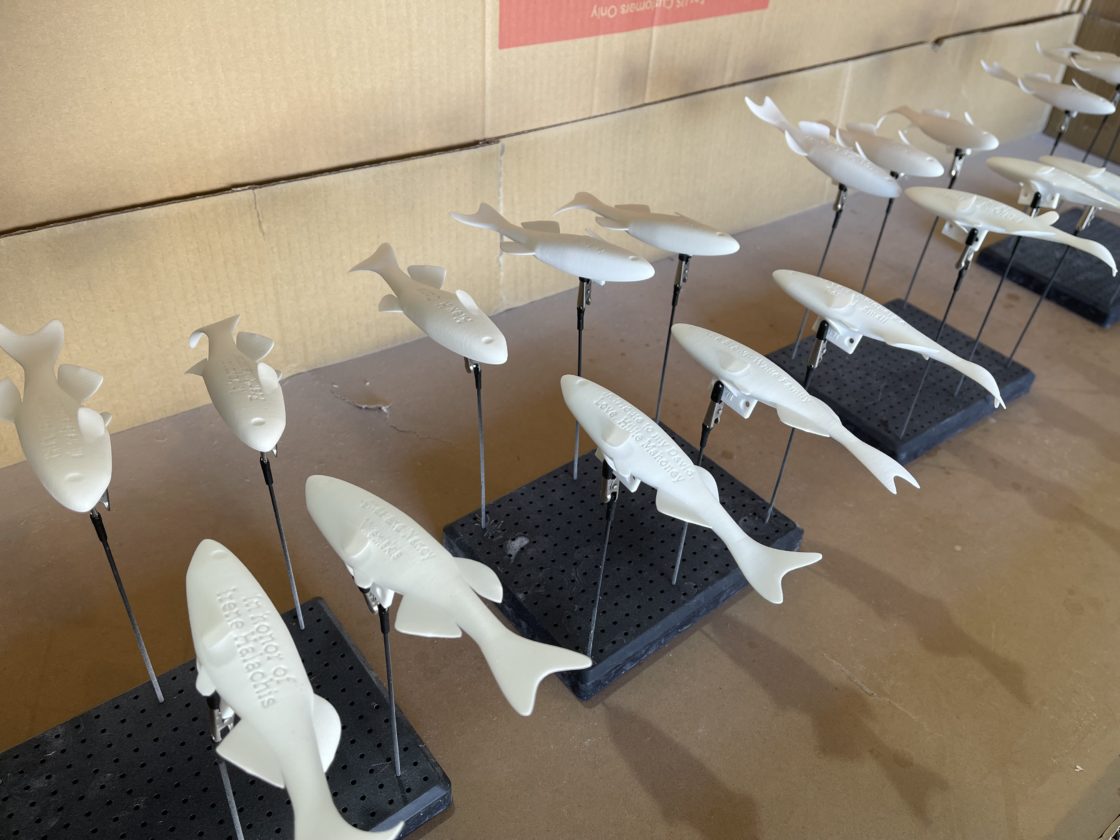
Communicating and Collaborating was Key as the 3D Printed Installation Evolved
In 2012, both Shapeways and Nathan Lachenmyer began working with Dana-Farber to create an installation with nearly 500 unique objects. Fast forward a decade ahead and Lachenmyer is now working as Director of Technology at Sitara Systems. He was called back–along with Sadiya Akasha, Co-founder and Director of Product Development at Sitara Systems, and Shapeways–for a reboot of the installation. The overhaul included new 3D prints and new technology to replace the touch sensors currently highlighting information about each donor contained in each one of the 477 fish.
“I was one of the last people that worked on the installation originally that’s still in the same industry, so they [Dana-Farber] called me up and asked if we could help with a refresh of the original,” said Lachenmyer. “Back in 2012 when we first worked on this project, there weren’t as many 3D printing services available. Shapeways was definitely the biggest service out there and they were willing to work with us on a unique project–especially one that was so labor intensive.”
“Even though 3D printing made it really easy to make 500 unique things, uploading 500 files, and building a cart with 500 files back then was a bit time consuming. That’s why we reached out and asked for help. Shapeways was super great back then and that’s part of why we’ve stuck with them throughout the whole process–we knew they are able to and willing to work with us, and give us the collaborative attention we needed to make the installation possible.”
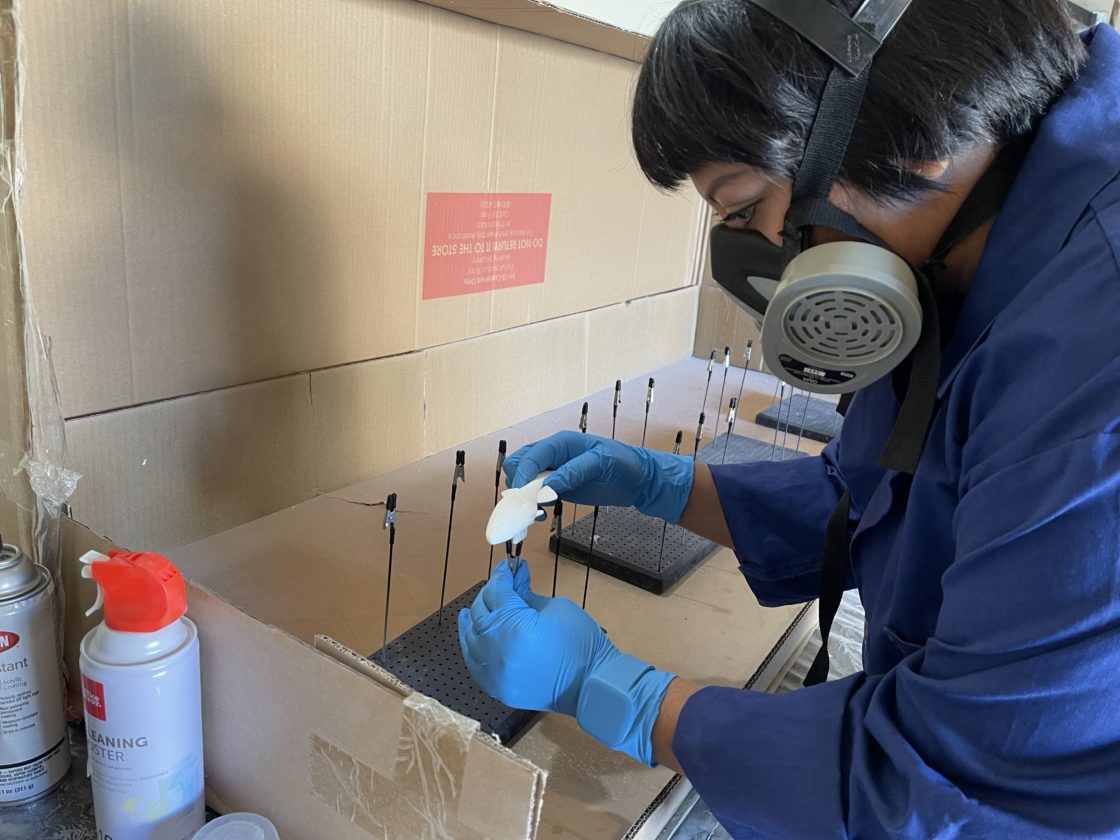
3D Printing Prototypes for Project Development and Testing
Sadiya Akasha points out that the current project was an evolving, collaborative relationship that included updating the prints as well as integrating Near Field Communication (NFC) tags for wireless contact without touch:
“We gave them a proposal early on when they approached us about converting the installation from the touch sensitivity design to one that was touch-free,” said Akasha. “From there, we met every two weeks, starting with ideation and thinking about ways and directions to take the project. We worked on early prototypes of the fish, getting the NFC tags, and working with the technology and testing it out.”
“As we got closer to understanding the kind of instructions we wanted to use on the screens, we were more able to understand what other types of changes were necessary in the project. For example, we wanted to know if we could 3D print the material and then explore different kinds of materials. We ordered samples from Shapeways that we could physically handle and review together to decide which would be best for the installation.”
Consideration was paid to the lettering, and whether there would be issues with 3D printing, or problems with gaps. The entire team put a lot of special effort into making sure there wouldn’t be any manufacturing issues, as they forged ahead in 3D printing prototypes and continued testing. As they continued to iterate, the project team realized how many more options were available in 3D printing in comparison to the initial phase of the project.
“Ten years ago, the process of iteration was much more straightforward simply because there were only several choices,” said Lachenmyer. “There wasn’t a large selection of materials or finishes, or even colors–although our opinion was that white would still be the best option so the LED lights would shine through them.
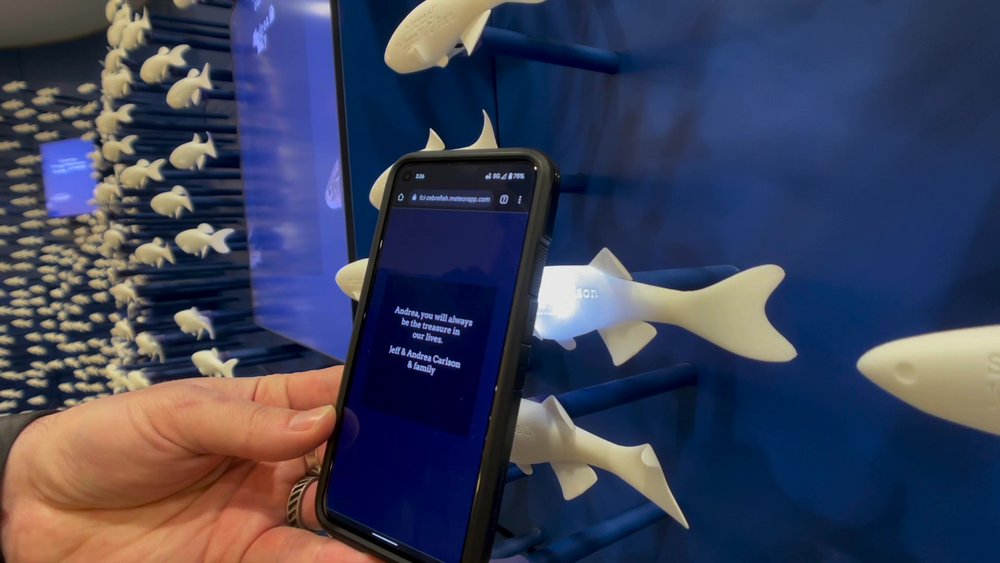
Experimenting with 3D Printing Materials and Finishes
The project team began with printing samples in Nylon 12 [Versatile Plastic] with the Natural finish. From there they began experimenting with the Premium finish, as well as other 3D printing materials. Ultimately, Nylon 12 [Versatile Plastic] won out again, but this time was accompanied by the Premium finish to add smoothness and avoid any textures that might collect dust. Upon receiving the 3D printed fish at their studio in Las Vegas, the team applied three layers of a clear, UV-blocking coat.
“That was to help it retain the bright white finish and also to give it another little bit of coating on top so it wouldn’t attract as much dust, and make it easier to clean,” said Akasha. “Our client wanted the refreshed installation to look really crisp and fresh, and require little maintenance in terms of dusting.”
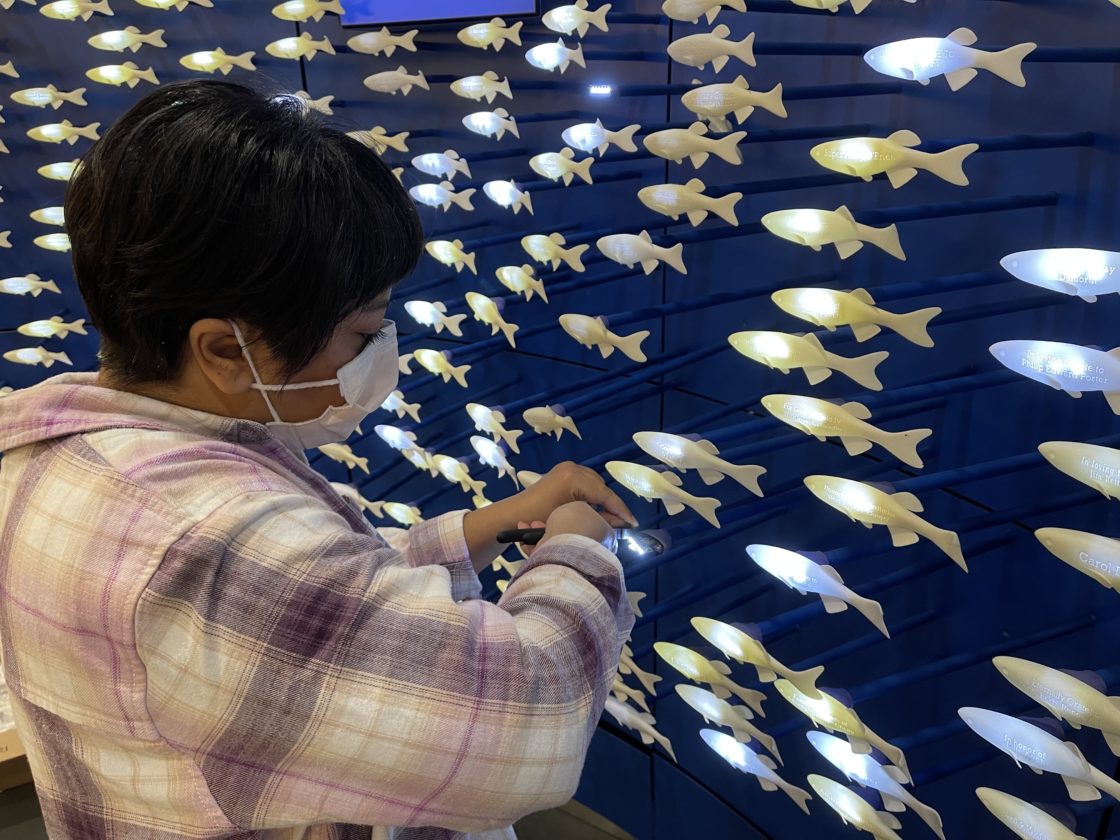
Large Scale 3D Printing with Selective Laser Sintering
One of the originals in terms of 3D printing methods created back in the 80s, Selective Laser Sintering is still one of the most popular choices for additive manufacturing, whether in rapid prototyping or production of end-use products with complex geometries. Designers and engineers turn to SLS 3D printing time and time again because of its versatility, and the ability to bring 3D designs to fruition on a large scale.
Operating as a subcategory of powder-based technology, SLS 3D printing relies on a laser to fuse each thin layer of powder dispersed onto the print bed. Because of the unused powder bunching up around parts during the 3D printing process, supports are not necessary–offering benefits as greater design freedom is allowed without having to design for support structures, and they are not a worry in post-processing where removal of support structures could result in the damage of a perfectly good 3D print.
Most SLS 3D printers are larger, averaging around 300 x 300 x 300 mm with a layer thickness of 100 to 120 microns, and average industrial build sizes of 500 to 1000 parts. Not only that, many parts can be nested together in one print build for large assemblies–or in the case of zebrafish display–for 477 3D printed fish meant to be attached to an undulating wall with steel rods acting as the fixing points for the 3D printed models.
Looking back, Lachenmyer points out that working with 3D printing in 2012 was very exciting, and as is still the case in so many design and manufacturing projects, it allowed everyone involved to examine product development from a new perspective–and to create a large, complex piece of work that would not have been possible with traditional manufacturing.
About Shapeways
Enjoy the benefits of this advanced technology and a wide range of materials from Shapeways for 3D printing your creations with accuracy, complex detail, and no minimum or limits in terms of mass customization or single part orders. Shapeways has worked with over 1 million customers in 160 countries to 3D print over 21 million parts! Read about case studies, find out more about Shapeways additive manufacturing solutions, and get instant quotes here.

